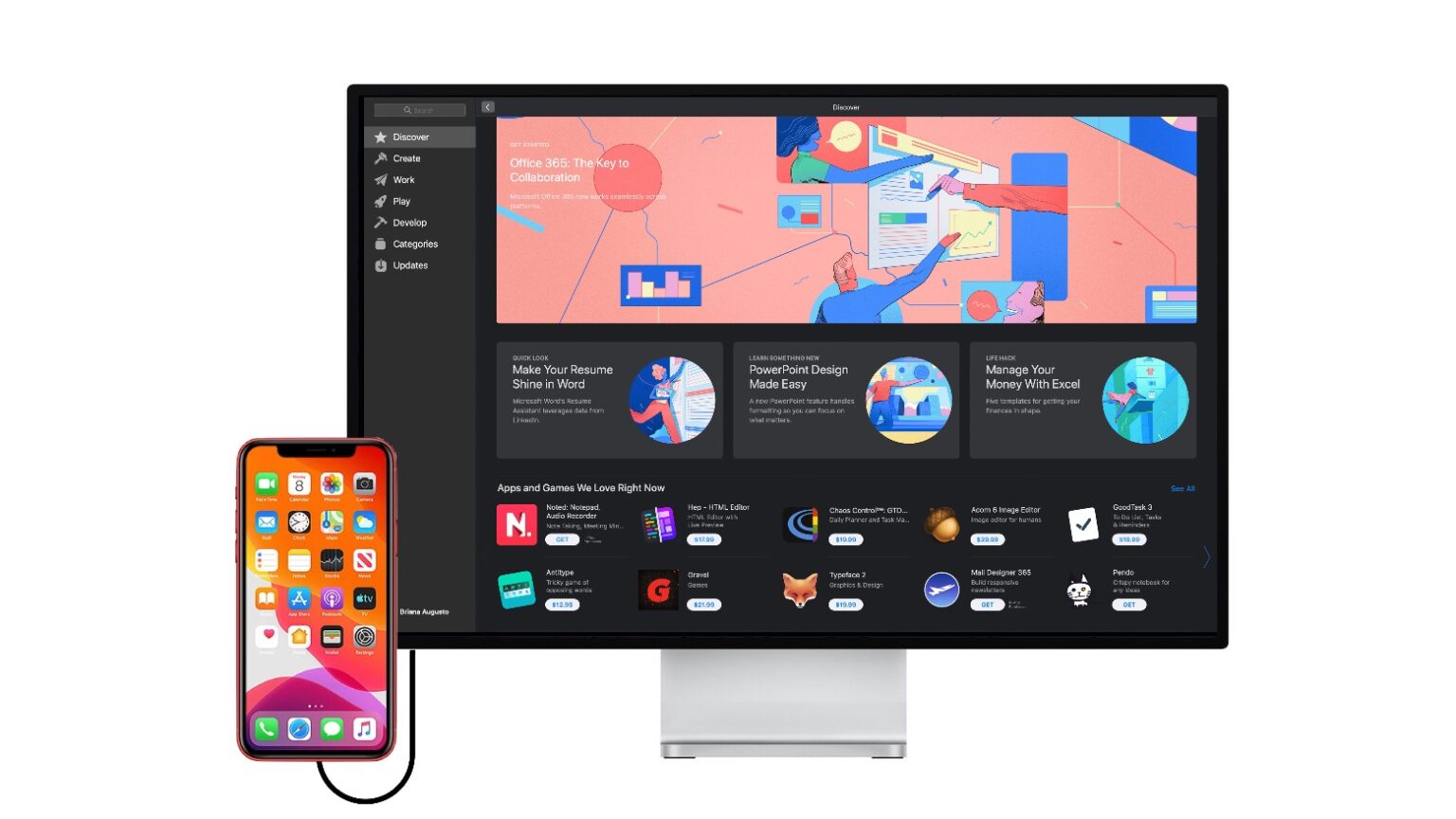To get round this you could search for the app on your Mac and then sync to the iPad, but that's far too long-winded. Instead, just click the menu that's currently labelled 'iPad Only' and change. 'It's a game changer': Apple says it'll start using its own chips, which will let you run iPhone and iPad apps on your Mac. 2020-06-22T19:05:10Z The letter F. By now, many, if not most of active iOS app developers are creating so-called Universal Apps that contain the code (a.k.a. “binaries”) compiled to run natively on both iPhone and iPad.
A Bloomberg report late last year said that one of the highlights of iOS 12 and iOS 10.14 might be a new way for developers to design apps. Specifically, apps created for iPhone or iPad would work on Mac and vice versa. That only sounds exciting if you’re rocking both an iPhone/iPad and a Mac. Sadly, it looks like the cross-platform app support feature isn’t ready for a 2018 reveal, and it’ll be pushed back to 2019.
The news comes from Apple enthusiast John Gruber who learned from well-informed “birdies” that the Marzipan project is real, even though that might not be its actual name:
There is indeed an active cross-platform UI project at Apple for iOS and MacOS. It may have been codenamed “Marzipan” at one point, but if so only in its earliest days. My various little birdies only know of the project under a different name, which hasn’t leaked publicly yet. There are people at Apple who know about this project who first heard the name “Marzipan” when Gurman’s story was published.
Use Ipad App On Mac
Gruber also has a few details on how this cross-platform app support would work, although he still doesn’t have a clear picture of it:


I don’t have extensive details, but basically it sounds like a declarative control API. The general idea is that rather than writing classic procedural code to, say, make a button, then configure the button, then position the button inside a view, you instead declare the button and its attributes using some other form. HTML is probably the most easily understood example. In HTML you don’t procedurally create elements like paragraphs, images, and tables — you declare them with tags and attributes in markup. There’s an industry-wide trend toward declaration, perhaps best exemplified by React, that could be influencing Apple in this direction.
The blogger does say that he’s “nearly certain” Marzipan won’t make it into this year’s WWDC announcement and will be postponed for macOS 10.15 and iOS 13 in 2019.
Native Mac apps built with Mac Catalyst can share code with your iPad apps, and you can add more features just for Mac. In macOS Big Sur, you can create even more powerful versions of your apps and take advantage of every pixel on the screen by running them at native Mac resolution. Apps built with Mac Catalyst can now be fully controlled using just the keyboard, access more iOS frameworks, and take advantage of the all-new look of macOS Big Sur. There’s never been a better time to turn your iPad app into a powerful Mac app.
Designed for macOS Big Sur.
How To Use Iphone Apps On Mac
When an app built with Mac Catalyst runs on macOS Big Sur, it automatically adopts the new design. The new Maps and Messages apps were built with the latest version of Mac Catalyst.
Get a head start on your native Mac app.
Your iPad app can be made into an excellent Mac app. Now’s the perfect time to bring your app to life on Mac. The latest version of Xcode 12 is all you need. Begin by selecting the “Mac” checkbox in the project settings of your existing iPad app to create a native Mac app that you can enhance further. Your Mac and iPad apps share the same project and source code, making it easy to make changes in one place.
Optimize your interface for Mac.
Your newly created Mac app runs natively, utilizing the same frameworks, resources, and runtime environment as apps built just for Mac. Fundamental Mac desktop and windowing features are added, and touch controls are adapted to the keyboard and mouse. By default, your app will scale to match the iPad’s resolution. On macOS Big Sur, you can choose “Optimize interface for Mac” to use the Mac idiom, running your app using the native resolution on Mac. This gives you full control of every pixel on the screen and allows your app to adopt more controls specific to Mac, such as pull-down menus and checkboxes.
Even more powerful.
The new APIs and behaviors in macOS Big Sur let you create even more powerful Mac apps. Apps can now be fully controlled using just the keyboard. You can create out-of-window and detachable popovers, control window tabbing using new window APIs, and make it easier for users to select photos in your app by using the updated Photos picker. iOS Photos editing extensions can now be built to run on Mac. And your app is even easier to manage when it’s running in the background with improved app lifecycle APIs.
New and updated frameworks.
Mac Catalyst adds support for new and updated frameworks to extend what your apps can do on Mac. HomeKit support means home automation apps can run alongside the Home app on Mac. The addition of the ClassKit framework lets Mac apps track assignments and share progress with teachers and students. Plus, there are updates to many existing frameworks, including Accounts, Contacts, Core Audio, GameKit, MediaPlayer, PassKit, and StoreKit.
Tools and resources.
Download Xcode 12 and use these resources to build native Mac apps with Mac Catalyst.